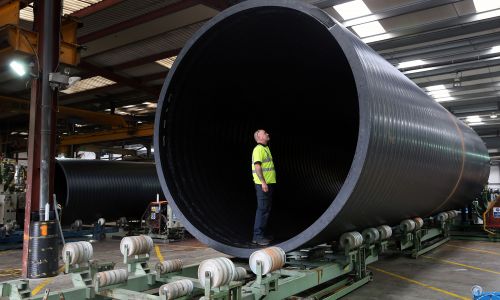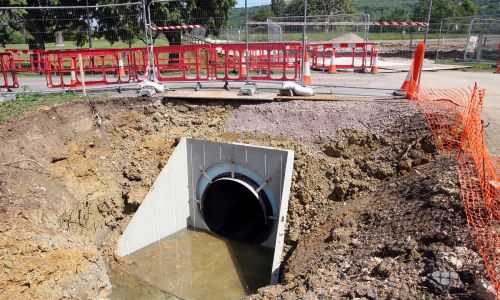5th September 2017
Is there a North / South divide in the UK government's flood defence spending?
Is there a north/south divide when it comes to flood defence spending in the UK?
Well, in essence that depends where you live, and how you perceive the statistics. And very often who you listen to.
For example, in the winter of 2015, the then Prime Minister David Cameron paid a visit to flood stricken York, during which he claimed that the Government was spending “more per head on flood defences in the north of England than we do in the south of England. And here in Yorkshire we are almost trebling the amount we will be spending in the current Parliament.”
However, mere months later, in the spring of 2016, the Government published their new national infrastructure delivery plan, which outlined £4.1bn of capital investment in schemes from 2016/2017 to 2022 and beyond, including major projects in Oxford, Lincolnshire, London and the Fylde Peninsula in Lancashire.
It stated that the south-east is to receive £167 per head on new flood defence and coastal erosion schemes, a sum that is almost double the £92 per person in Yorkshire and the Humber, and more than five times the £30 set to be spent in the North West.
The figures appeared to make a mockery of David Cameron’s statement that he made while visiting some of the northern towns and cities that had suffered some of the worst damage during the winter storms. And immediately prompted accusations that communities devastated by the recent floods had already been “forgotten”.
A notion that has only continued to gather momentum in the eighteen months since, and that has been exacerbated by constant news reports emphasising the flood defence funding being poured into the south, while the north goes wanting.
For example, in December 2015 the Yorkshire Post published an article stating that the government found £297m in December 2014 to pay for flood defences in the Thames Valley, but had cancelled a £180m defence scheme in Leeds, replacing it with a scaled back £45 million scheme instead.
Additionally, following the winter floods of 2015, the Government announced a funding package of £12.5 million to be used primarily for water pumps. Of this £12.5 million, £8.5 million was to be used on one anti-flooding defence system in Marlow, Buckinghamshire following the flooding of 23 properties.
Factor in additional details like the vast costs associated with running the Thames Barrier (around £6 million a year to operate and maintain) and it’s easy to see why northerners believe they have reason to grumble, with many claiming the government would never permit extensive flooding in city centres in London and the Home Counties.
A mood summed up by Leeds city council leader, Judith Blake, who has said: “I think we’re beginning to feel that very strongly. At that time there were other flooding events in the north that didn’t get anywhere near the support that we saw going into Somerset [during the winter floods of 2013-14].”
So is the idea of a north/south divide when it comes to flood defence spending perception or reality?
As with most things in life, it’s not clear cut.
And according to the Financial Times, it’s especially hard to say because official figures produced by the environment department (DEFRA) “take extreme liberties with UK geography”.
The FT reported in 2016 that: “The department announced that over the next six years £54 per head annually would be spent in the north and east region and £42 in the south-east.
“But the north and east region is defined by the Environment Agency as including Leicestershire and Northamptonshire, while Greater Manchester (which was affected by the recent flooding), Merseyside and Cheshire, which would normally consider themselves as being in the north, are classed as West — as are Somerset and Devon. The south-east is defined along more conventional lines but still stretches further north than on most maps.”
The department also failed to produce figures for the past five years, leading to claims the figures had been fudged, and also failed to note that the population of the north is lower than the south.
However, infrastructure and insurance insiders claim the figures aren’t quite as skewed as people would believe, with David Wilkes, global flood resilience leader at building consultants Arup, stating that he did not believe there was a divide and that return on investment was the biggest factor in deciding where to put defences, which of course would skew spending towards large towns and cities and away from the countryside.
And Mohammad Khan, insurance partner at PwC, who paid out hundreds of millions during the winter storms of 2015, has said that it’s a “misconception” that the north had borne the brunt of UK flood damage. “It has generally been more spread out than most people assume,” he said.



